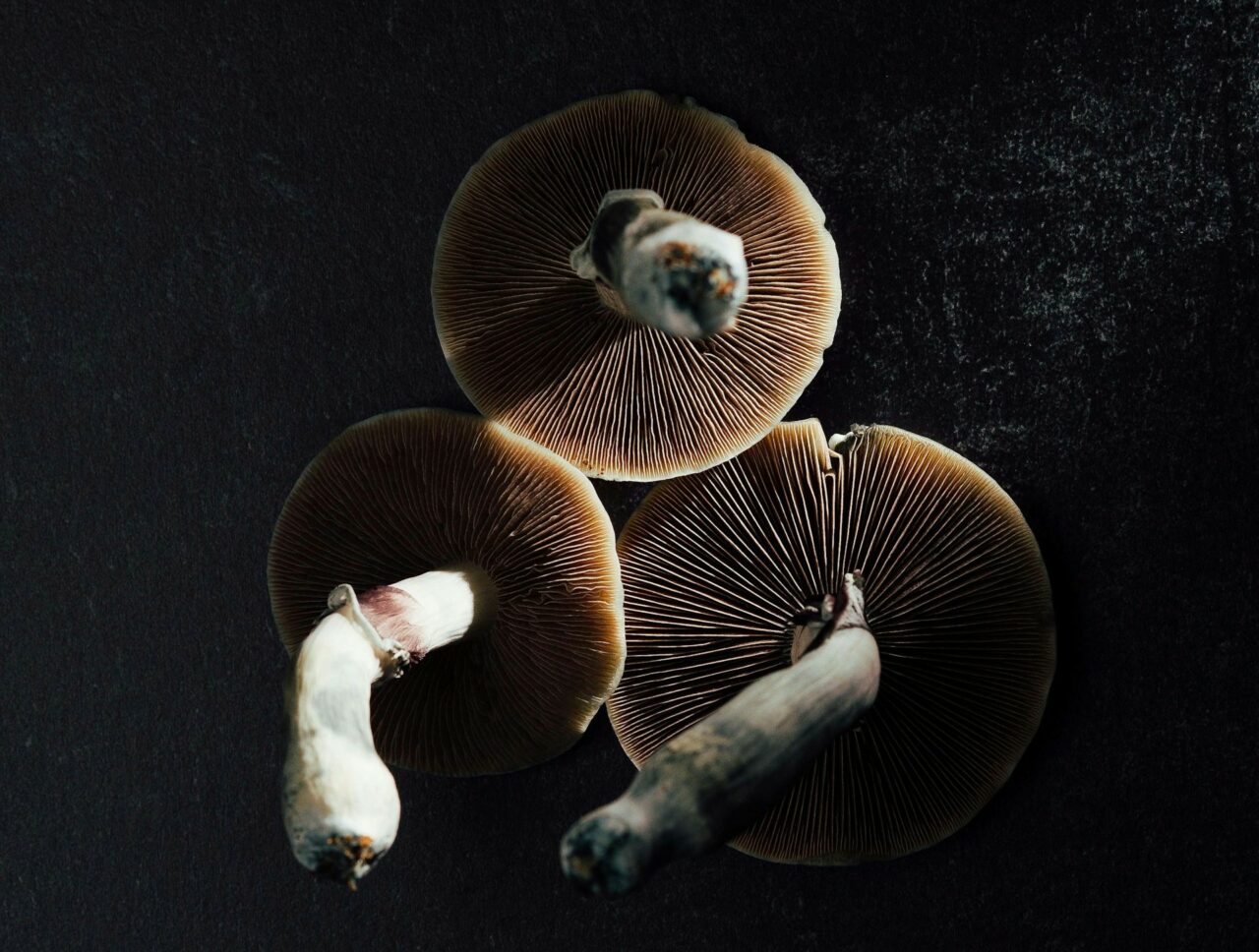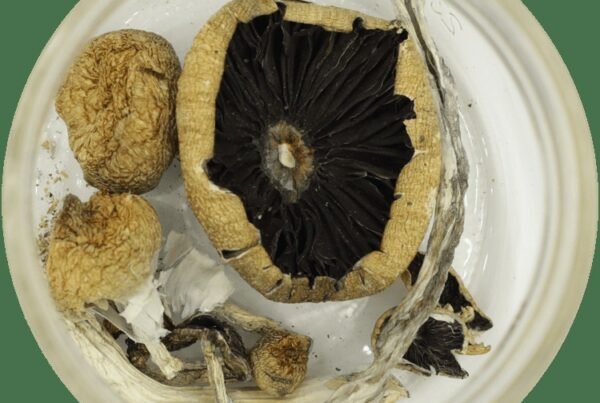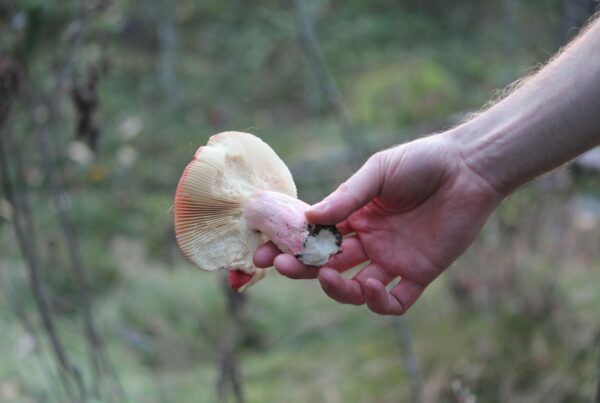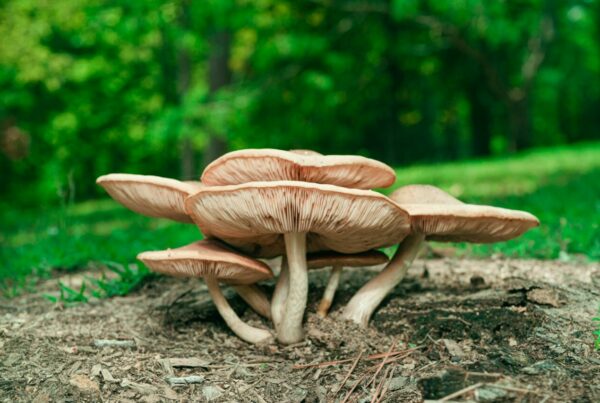The interest in naturally occurring magic mushrooms in Canada is on the rise, paralleled by the growing popularity of lab-created psilocybin products. Many researchers are drawn to these synthetic products due to their guaranteed dosage. However, they may not realize that natural mushrooms can possess a higher potency than their lab-grown equivalents. Experts have underscored substantial differences between the two, including discrepancies in strength.
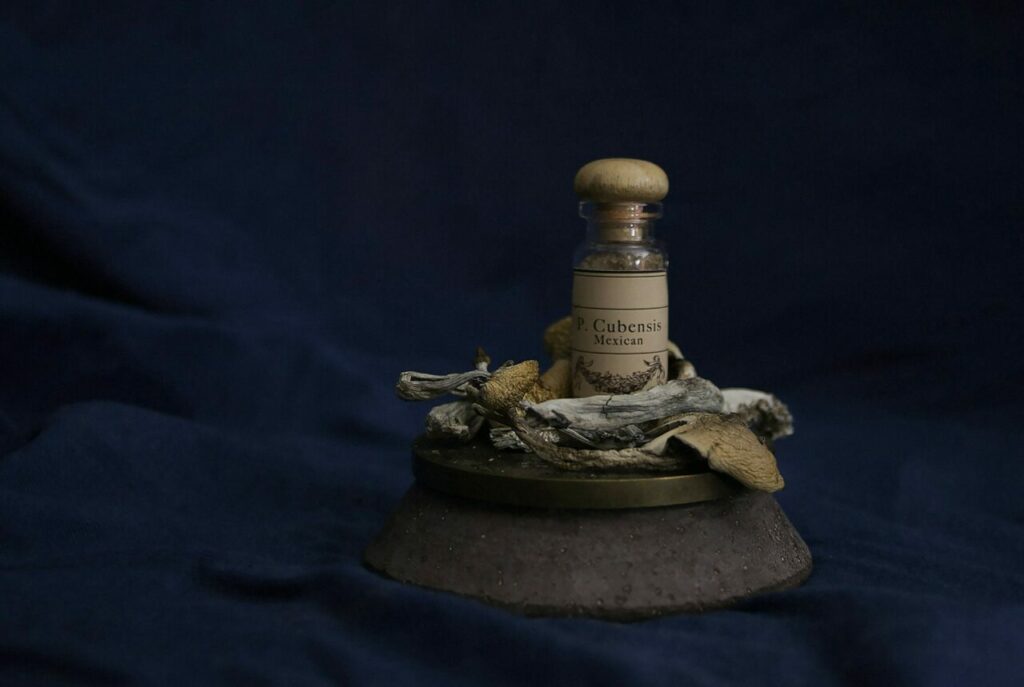
Key Takeaways:
- Over 180 species of natural mushrooms exist, each offering varying levels of potency. These effects can be influenced by the species, consumption method, cultivation process, and the individual’s tolerance.
- Synthetic psilocybin, a lab-generated version of the natural compound, is produced under controlled conditions to ensure consistency and purity. This is particularly important for clinical research, especially in the field of mental health treatments.
- The combined effects of various compounds found in psychedelic mushrooms, like psilocin and baeocystin, can lead to a more profound and intense experience than a single compound alone.
The Expanding Market: Psychedelics in Various Forms
The demand for psilocybin mushrooms in Canada is escalating, particularly for the treatment of specific mental health disorders such as OCD, depression, PTSD, and anxiety. In light of this growing interest, regional governments are starting to contemplate the decriminalization of recreational use.
In 2020, Canada legalized the restricted medical use of these mushrooms under certain conditions. More recently, the federal government granted permission for specific terminally ill patients to use these substances to help manage their symptoms.
Such forward-thinking developments have paved the way for the rise of synthetic psychedelics.
The Ongoing Debate
The continuing dialogue about natural versus lab-synthesized psychedelics focuses on aspects of safety, accessibility, and cost.
Many contend that natural psychedelics provide a more comprehensive and traditional experience. Conversely, advocates for lab-created versions point out their advantages in terms of standardization for medical use, as well as guaranteed dosage control and quality.
While lab-manufactured psychoactive substances could expand accessibility, there are ongoing worries about potential drug monopolization. Critics warn that this could lead to reduced accessibility and heightened costs for individuals.
/wp:paragraph –>A Comprehensive Guide to Psilocybin
Psilocybe cubensis, a specific kind of magic mushroom, is among the numerous naturally-occurring psychedelic substances present today. Magic mushrooms, distinguished for their mind-altering effects, come in a variety of strains, such as Golden Teachers, Amazonian Cubensis, and Blue Meanies, with Psilocybe cubensis being the most well-known group.
Deciphering the Psychedelic Process
Psilocin, a derivative of this mushroom, metamorphoses into a separate chemical once it is metabolized by the liver. This novel compound engages with the brain’s serotonin receptors, notably the 5-HT2A receptor.
This receptor is instrumental in regulating mood, cognitive processes, and perception. Its engagement with the novel compound disrupts the normal operation of serotonin pathways, leading to changes in visual and auditory perception, shifts in thought processes, and emotional states. This process culminates in an enhanced mood, boosted creativity, introspection, and what are commonly referred to as “psychedelic” experiences.
Two Fundamental Categories
| Natural | Found in more than 180 species of fungi, the potency of these substances varies depending on the specific mushroom species. Psilocybe cubensis is a prevalent variety. The effects can differ based on methods of consumption, cultivation techniques, and individual tolerance levels. |
| Synthetic | Manufactured in labs and chemically identical to natural compounds. They are produced in controlled conditions to ensure uniformity and purity. These forms are steadily being explored for clinical uses, particularly in the realm of mental health treatment. |
Comparing Nature’s Bounty and Science’s Invention: The Essential Differences
Natural variants of these substances are found in certain kinds of magic mushrooms. Native communities in North and South America have historically utilized these mushrooms in their rituals and ceremonies, viewing them as sacred or divine.
- Derived from plants and mushrooms
- Employed in ancient rituals and therapeutic practices
- The unique genetic composition of each strain determines its potency
On the other hand, the
A synthetic or lab-produced drug is These substances closely mirror the natural chemical makeup of certain compounds. Expertly developed by professionals in strictly regulated environments, these drugs ensure precision. While they function similarly to natural drugs, they possess the potential to alter the overall psychedelic experience.
- Produced by adept pharmaceutical specialists
- Innovative creations for medicinal applications
- Precisely measured potency due to controlled manufacturing
Natural substances provide more advantages owing to their bioactive compounds. Different mushroom varieties can contain different concentrations of psilocybin and other compounds, resulting in a range of effects.
Research Findings
Researchers at Hebrew University revealed that psychedelic mushrooms have a more potent and long-lasting effect on synaptic plasticity than their synthetic counterparts. The research analyzed the drug’s influence on mice’s brain activity by monitoring changes in behaviour and specific brain chemicals.
The research discovered that the extract reduced head twitches and promoted the formation of new brain connections. This suggests that the mushroom extract might hold more benefits than a single compound.
The study also introduced the “entourage effect”, a phenomenon where the combined effect of various compounds in psychedelic mushrooms could surpass the influence of individual compounds. For mushrooms, psilocin, baeocystin, and other tryptamines may synergize to yield a profound experience.
These extra chemicals aren’t found in lab-created substances, which might result in slight differences in effects, even if the psychedelic content matches.
Specialist Opinions on Nature’s Superiority
Studies consistently show that psilocybin—regardless of its form—offers promising outcomes for treating various psychiatric disorders. A 2024 study examined the impact of controlled substances on patients with treatment-resistant depression, finding a decrease in symptoms after administering magic mushrooms.
When combined with other treatments, natural psychedelics could potentially facilitate deeper emotional processing and insights during therapy sessions, thus enhancing long-term outcomes.
Researchers from the same university found that hallucinogenic mushrooms boost synaptic plasticity. They possess a unique metabolic profile that affects oxidative stress and energy production pathways, unlike lab-created psychedelics.
Market Consequences
As the wealth of research on this subject grows, it could potentially shift the perspectives of Canadians and alter their purchasing behaviors towards psychedelics. Initial efforts by Health Canada, such as the Special Access Program, are demonstrating positive signs of laying the groundwork for legalization and revolutionizing the therapeutic landscape. Psilocybin-aided therapy may become a dominant treatment method in the near future.
Organic options are anticipated to become increasingly important in clinical trials and therapeutic settings. As the country progresses towards fully unlocking the potential of organic psychedelics, substantial progress in mental health therapies seem to be within reach.
Instructions for Safely Procuring Shrooms in Canada
- Under Section 56 Exemption: Health Canada recognizes that patients with severe medical conditions may resort to psilocybin as alternative treatment. This exemption is part of the Controlled Drugs and Substances Act.
- Clinical Trials: Initial clinical trials have been approved to investigate the drug’s potential in treating mental health disorders. Participants need to meet specific requirements and pass a physician’s evaluation.
- Online Market: Psilocybin capsules or edibles can be purchased from online sellers in Canada, yet it’s crucial to buy from reliable sources.
Unearth the Strength of Natural Compounds
Nature is replete with marvels, including shrooms. Rather than turning to synthetic psychedelics, consider the naturally potent magic mushrooms from Canada. They are powerful and therapeutic. Discover the best, naturally sourced shroom strains at Psychedelic Canada.
The shrooms we have for sale not only meet the standard but exceed it by maintaining their pure and authentic composition in dried form. Place your order now to have your chosen items delivered conveniently and discreetly to your doorstep.
Frequently Asked Questions
What are baeocystin and norbaeocystin?
Both are tryptamine or indole alkaloids. They share a chemical similarity with psilocybin. These tryptamine derivatives act as secondary alkaloids in shrooms, playing a part in the overall psychedelic experience, albeit to a lesser extent. Baeocystin and Norbaeocystin have a similar chemical structure but differ in their psychoactive attributes.
Are organic dried mushrooms included in capsules and edibles?
Experiences may vary depending on the source. Online Dispensaries offer products abundant in organic compounds, facilitating the full entourage effect. Capsules, often found in clinical trials and clinics, typically contain synthetic compounds.
Do natural psychedelics lead to more profound experiences?
It’s worth noting that expecting an intense experience from a natural psychedelic could potentially create that very result. Our expectations, part of the ‘set’, can guide the journey. Natural psychedelics frequently have ties to ceremonial traditions, and this ritualistic framework can generate uniquely fulfilling experiences. Such experiences differ considerably from clinic sessions that use synthetic compounds.

